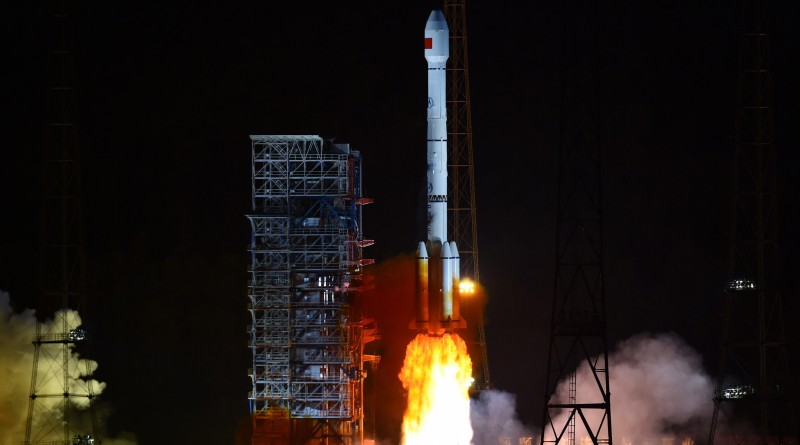Chinese Military Communications Satellite blasts off atop Long March 3B Rocket
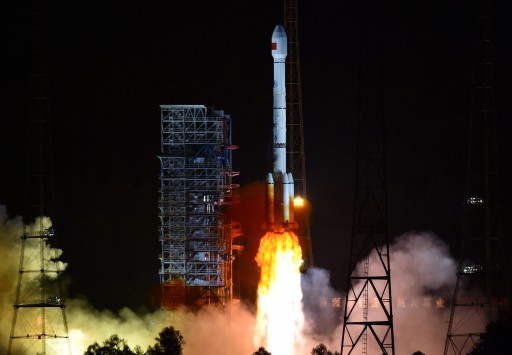
A Chinese Long March 3B rocket blasted off from the Xichang Satellite Launch Center at 16:46 UTC on Wednesday, carrying a military communications satellite to Geostationary Transfer Orbit. Keeping up the pace in orbital launches towards the end of the year, this marks the sixth flight of the heavy-lift Long March 3B and the 13th mission of the Long March fleet in the last three months.
Chinese officials confirmed the success of the launch about two hours after the post-midnight liftoff.
The payload of Wednesday’s launch has been identified as Zhongxing-1C (ChinaSat-1C) and belongs to China’s military communications satellite fleet operated from Geostationary Orbit, 36,000 Kilometers above the equator to deliver secure communications around the globe. Operated by the Chinese armed forces, the architecture of the secure satellite communications system calls for a division of tactical and strategic communications.
The Fenghuo series of satellites is used to provide tactical communications in the form of secure data and voice links between ground terminals including mobile systems operating in the UHF frequency range.
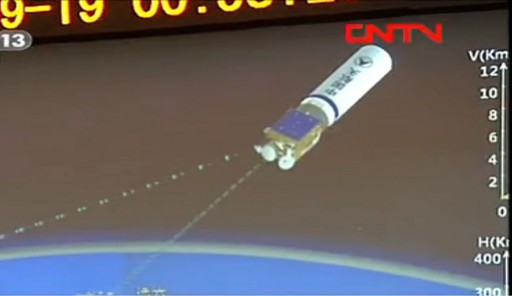
The first generation of Fenghuo satellites was inaugurated in 2000 when a Long March 3A rocket lofted the ChinaSat-22 spacecraft. Six years later, the second Fenhuo satellite was launched under the ChinaSat-22A designation. The second generation of Fenghuo satellites saw one previous launch in 2011 when the ChinaSat-1A satellite was lofted by a Long March 3B.
The Shentong satellite series is operated by the People’s Liberation Army and delivers secure voice and data communications in Ku-Band for strategic applications. Shentong was inaugurated with the ChinaSat-20 mission in 2003 and a second first generation satellite was lofted in 2010. The second generation of Shentong satellites saw two launches to date, the first in 2015 and the second last month when a Long March 3B delivered the ChinaSat-2C satellite to Geostationary Transfer Orbit.
Based on the ChinaSat-1C designation, the satellite likely belongs to the Fenhuo tactical communications satellites. No information or technical details are available on the satellite and no updates were given on the preparation for the launch with the exception of the typical navigational warnings in the usual secrecy of Chinese military space missions.
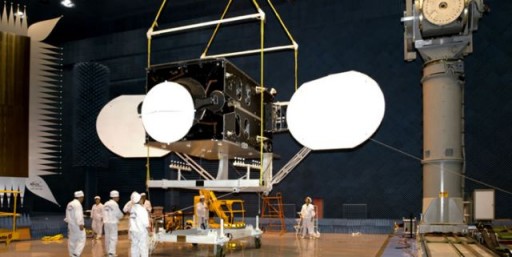
The second generation of Fenghuo satellites are in all likelihood based on the DFH-4 satellite bus – a third generation communications satellite platform, capable of facilitating high-power and high-capacity communications payloads for different applications such as direct broadcasting, tracking and data relay, mobile communications, etc.
DFH-4 measures 2.36 by 2.10 by 3.60 meters in dimensions and can accommodate payloads of up to 588 Kilograms, creating a launch mass of a maximum of 5,200 Kilograms. Two 6-meter solar arrays generate an End-of-Life power of 10,500 Watts of which 8kW are available to the payload. DFH-4 is divided into three modules – the propulsion module, the service module and the payload module. Onboard batteries are used to store power for night passes and power distribution is provided by dedicated avionics systems.
The DFH-4 satellite platform uses state of the art navigation and attitude determination systems and reaction wheel-based attitude actuation. The satellite is equipped with a main propulsion system for the climb to Geostationary Orbit and reaction control thrusters used to assist in attitude control and stationkeeping in the Geostationary Belt that is possible with an accuracy of +/-0.05° in all directions. DFH-4 is built to host C, Ku, Ka and L-Band payloads with a nominal service life of 15 years.
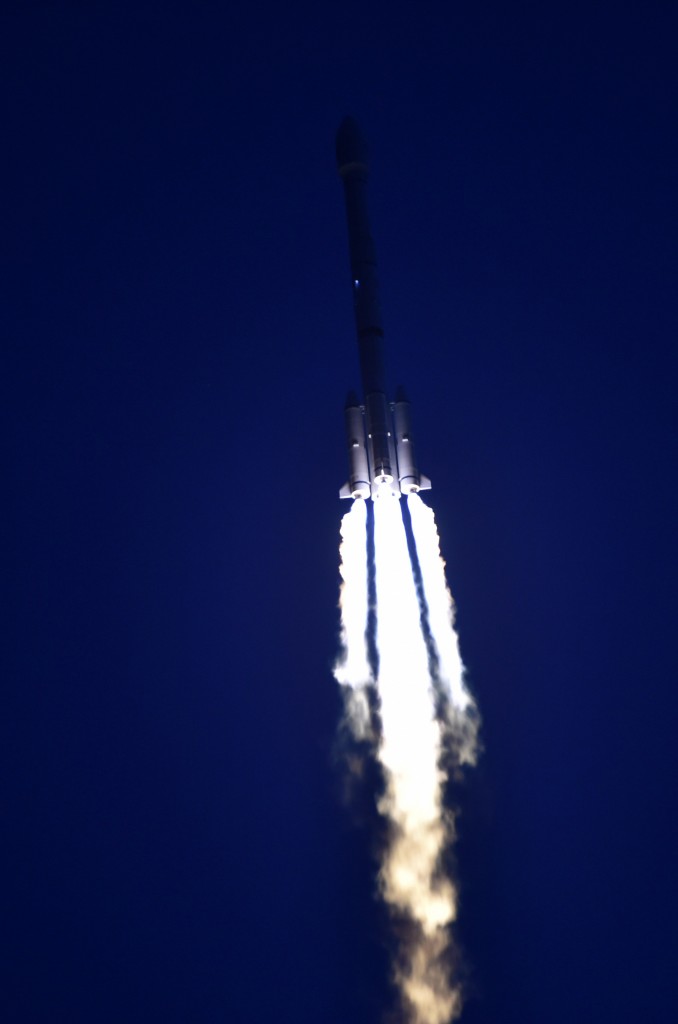
Lifting off from Xichang at 0:46 a.m. local time, the 56.3-meter rocket weighing 456 metric tons completed a short vertical ascent before aligning itself with a south-easterly trajectory, taking it over the Yunnan, Guizhou and Guangxi provinces, the Gulf of Tonkin, Hainan Island and out over the Pacific Ocean.
With its four liquid-fueled boosters and large core stage firing at full throttle, the Long March 3B had a total launch thrust of 604 metric-ton-force.
The four boosters, 16.09 meters long and 2.25 meters in diameter, were to fire for two minutes and 20 seconds – each delivering 740 Kilonewtons of additional thrust and burning through 41,100 Kilograms of hypergolic propellants. After separation of the boosters, the vehicle was to continue ascent powered by the core stage alone, fitted with a four-chamber DaFY-6-2 engine cluster providing 2,961 Kilonewtons of thrust. The stage stands 24.76 meters tall and holds 186,200 Kilograms of propellants at liftoff enabling it to burn for 158 seconds.
Separation of the stages was planned to occur in hot mode, starting with the ignition of the second stage’s vernier engine and followed by the firing of cutting charges to allow the second stage to pull away from the spent core for main engine ignition. The 12.9-meter long second stage, holding 49,000kg of propellants, was expected to burn for nearly three minutes with a total thrust of 742 Kilonewtons.
Assuming control of the flight, the third stage was to ignite its YF-75 dual engine cluster that, unlike the other CZ-3B stages, burns Liquid Oxygen and Liquid Hydrogen. Generating 157 Kilonewtons of thrust, the third stage was to burn through 18,200 Kilograms of cryogenics over the course of two burns to raise the apogee of the orbit and achieve a Geostationary Transfer Orbit for spacecraft separation just over 26 minutes into the flight.

